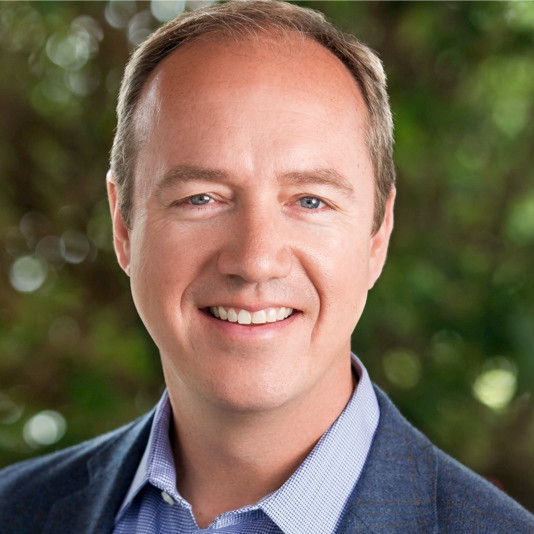It’s that time of year when every marketing leader is either knee deep into planning for next year. Or at minimum, they’re beginning to put their thoughts together for what the upcoming year will look like. Now more than ever, with the rise of AI and the uncertain economic and political climate marketing leaders have a lot to consider going into 2024. In response to this we turned to some of the brilliant marketers we’ve interviewed on our ‘How I Work’ podcast, to reengage their brilliance and we asked them the following three questions:
1) How are you thinking about, or approaching AI? How much of a role or impact is it playing in your 2024 marketing planning?
2) What channels are you prioritizing for 2024? Are there specific channels you are looking to invest more in, and if so, why? Any channels where you’re planning to decrease your investments? Why?
3) What excites you most about the future of the marketing landscape?
Here is what they had to say:
RYAN TRUAX
SENIOR DIRECTOR OF MARKETING – LEADPAGES
I’d sound a bit crazy if I didn’t say it’s a constant talking point for us. Our GTM strategy certainly supports all the great AI functionality we’ll be releasing, but our own usage might be unique. We’re wholesale retooling our SEO and content strategy to better align with SGE, Gemini and ChatGPT. Paid advertising will look different than it did in 2023—I’m focused on keeping us ahead of what’s coming next. However, our UVP will heavily lean into the human side of the business. Services are unlocking revenue channels that will shape the trajectory of our business. In short, if you’re not working with it, you’ll fast become a laggard.
We’re doubling down on all Google properties. I have high hopes for Performance Max, but you have to patient to see it reach its full potential. I’m keen to see how broad match algorithms continually improve. We’ve sunset Facebook. Retargeting is still performant to our ROAS targets, but when it comes to customer acquisition, I’m out.
There’s unique utility in proprietary data. A number of us have large data sets that can drive how we engage with prospects and customers alike. Too often I don’t think marketers have done the best job socializing this data with the market. With AI and ML making aggregating large data sets quite easy, I’m hopeful see new data sets that truly build trust and drive purchase decisions.

Madeline blasberg
DIRECTOR OF MARKETING – DELIVRA
Right now, we’re primarily looking to leverage AI for content creation. That means working it into our ideating, researching, and writing processes—pretty much everything from our email newsletter to blog articles and paid ads. We’ve started to see increased efficiency but have a long way to go. I’m interested in exploring more image/graphic design generation in the future. But overall I think the challenge is to build this new muscle (both personally and as an organization).
I think the end goal would be to have AI so engrained in our day-to-day that every problem or project I take on prompts me to ask: how could AI help me here? And then build up the tools and processes to do so. But making that mental shift is the first step.
We continue to prioritize Google Search for the bulk of our direct-response B2B lead generation, I don’t see that changing anytime soon. In terms of demand gen. and brand awareness, we are increasing our investment in Google Discovery ads (now Demand Gen) and YouTube video ads to custom audiences, to build up a remarketing base we can then reconnect with across various channels (including LinkedIn). I also foresee increased investment/testing into sponsored content (newsletters, podcasts) in the year ahead.
We have already significantly decreased our spend on Facebook and will continue to hone in the budget. We have done extensive testing on Facebook (for B2B) using various audiences and ad formats (including lead gen. Ads for various stages in the funnel) but consistently see poorer end-to-end engagement and lower quality than other paid channels.
CHIP HOUSE
CHIEF MARKETING OFFICER – Insightly
I suspect 2024 will include a similar focus, but building on the areas of success.
We’re decreasing our spend in demand capture, including paid google and paid social. Prices have been rising here and it is getting more difficult to achieve an ROI when there is no brand affinity in place. We aren’t eliminating spend, but getting more targeted on verticals/ICP where we can make ROI. So, we’re spending more of our time and focus on content, SEO, demand creation, video testimonials, video demos and product tours, and other ungated research to drive multiple touches and engagement with our website and landing pages. Also increasing testing in CPL spending where there are external guides to our space where our competitors are also present (e.g.- Forbes product rankings). We’re also putting more focus on ABM intent tools, and also tools that help us track users as they change jobs, as they are a ripe source for outbound outreach, closing at 2X the rate of other sales opportunities.
It is hard to find that much exciting these days in marketing, as Google and social channels continue to build their walled gardens. Also, AI and automation tools to help us all grow more efficiently than in the past and better leverage our resources.
TROY THIBODEAU
CHIEF MARKETING OFFICER – PROCUREMENT PARTNERS
Generative AI will be transformative to content creation, especially for those with more limited budgets. The pace at which the tools to create content are coming out, the pace at which the platform data sets are growing (thus improving results) is staggering. Staying current on these trends and where the best use of time and money should go is critical. Similar to the outset of the web back in the late 90s, there will be winners and losers of the generative AI land grab. Prompt design will be the new, required skill set of the next generation of Marketers (similar to the science of SEO). Given the pace of change taking place, I expect the discussion of AI to evolve considerably over the coming months and year.

Josh Werner
vp of marketing – Parallax
We’re using ChatGPT for quick research on topics and to get ideas on content we want to produce to then create a more polished piece from – not exactly AI but in the ballpark. Outside of that, we look to our technology providers (Hubspot, ZoomInfo, etc.) to develop the AI to help us work better in our embedded toolstack.
We are highly prioritizing video-first content creation and deploying through social media (organic + paid). We will also be partnering with industry influencers to help increase our reach and to lend their credibility to us. The way people are influenced to purchase technology has changed – we rely significantly more on quick-bites of information and influence from those we trust. We will be pulling back from a strong focus on SEO content. While we’ll always have an underpinning of optimizing content for search, chasing the Google algorithm in a highly-competitive space takes a huge effort we feel we can put elsewhere where we feel more confident about engaging with our target audience.
I’ve always been a B2B marketer and I’m seeing signs that brands are taking more risks to blur the lines between B2B and B2C (creative, tone of voice). This is a big mantra for us – we don’t need to be the same old boring B2B brand with stock photography and stuffy language. We are looking to be more human and speak to our audience like humans. Really, the idea that B2B companies are taking more risks to stand out to differentiate is exciting because the same playbooks that worked in the past are being challenged and those that can find the B2B/B2C balance will be the winners.
patrick schaber
DIRECTOR OF MARKETING – GovDocs
We’re using AI mainly for inspiration right now. We’re finding AI tools a great resource for ideation around content, imagery, product names, etc. This will continue into 2024.
Moving into 2024 we will continue our main investments in content marketing, email marketing, and SEO to support advancing our thought leadership strategy. We will also be increasing investment in video and social media content as mediums to proliferate the distribution of content.
I think the companies that maintain tried and true marketing strategies while understanding when and how to augment those strategies with new technology will be the winners. What excites me is finding that balance.







